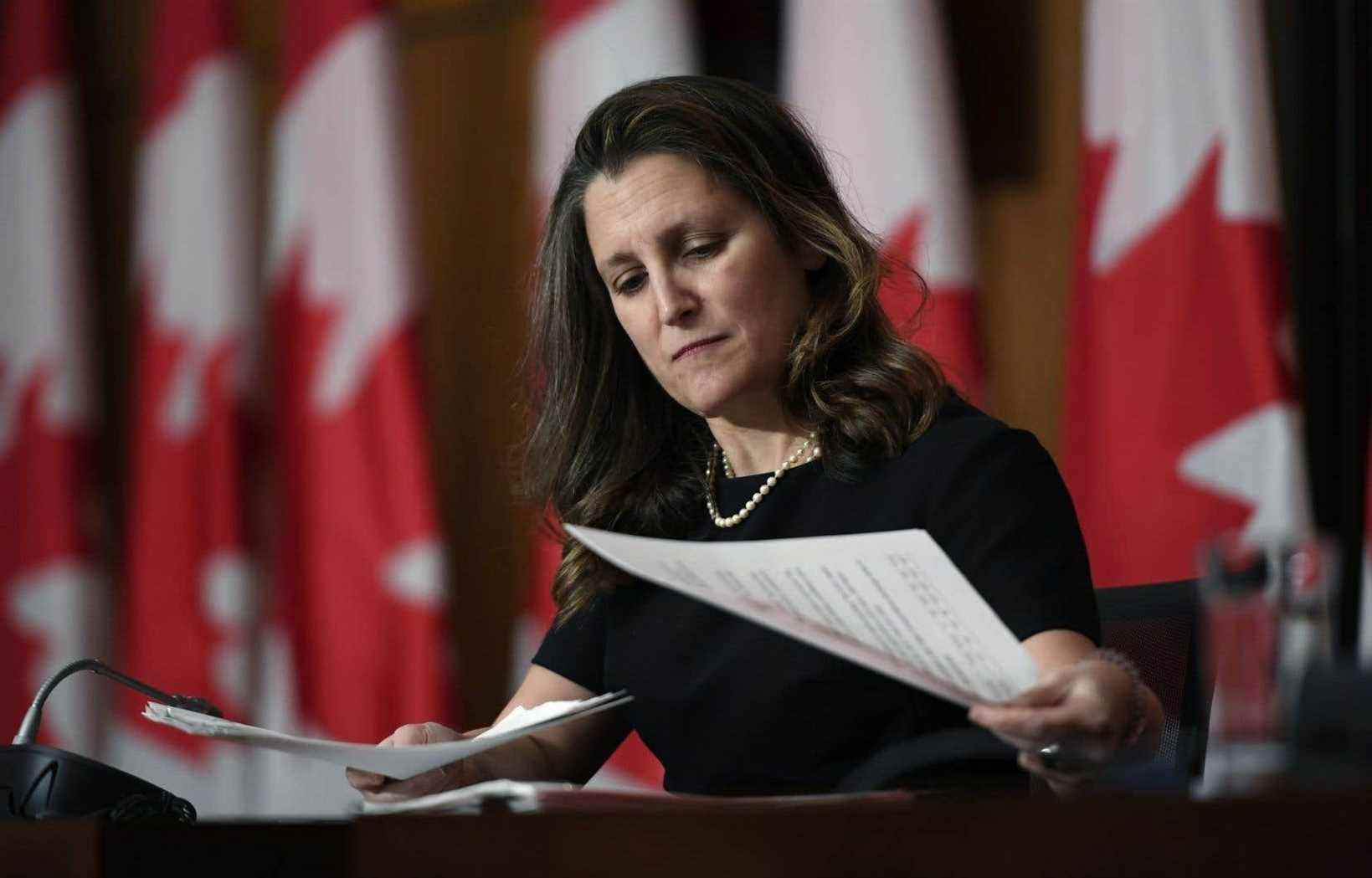The federal government is stepping up its offensive against COVID-19 with rapid screening tests, additional therapeutic products and additional health measures at the borders.
“We are setting aside an additional $ 4.5 billion to cover possible new costs associated with tackling the Omicron variant and other spikes in COVID-19 cases,” said Finance Minister Chrystia Freeland , during the presentation, by interposed screens, of the economic and budgetary update of the Government of Canada, Tuesday afternoon.
Due to the sustained recovery of the economy, the Deputy Prime Minister anticipates smaller deficits than expected – 327.7 billion at the end of the 2020-2021 financial year (-26.5 billion) and 144.5 billion billion at the end of the 2021-2022 financial year (-10.2 billion) – despite the increase in public spending.
Ottawa will provide $ 1.7 billion over the next three and a half months to stock up on some 180 million additional rapid screening tests. “These rapid tests represent a useful tool in the fight against the worsening Omicron variant. We get them. We distribute them. And we encourage Canadians to use them, ”said Chrystia Freeland, while noting that the federal government is“ preparing [e] to the increasing wave attributable to the Omicron variant ”.
On the other hand, the government is reserving 2 billion more to acquire in 2021-2022 and 2022-2023 additional therapeutic products, including antiviral drugs, which “can prevent the hospitalization of patients with COVID-19 and save Lives “. “Recently, Merck and Pfizer presented the results of their clinical trials to Health Canada to request authorization to use these products. The Public Health Agency of Canada is also monitoring several other promising therapeutic products that could help complete the fight against COVID-19, ”reads the documentation provided by the Ministry of Finance.
The total bill for the COVID-19 pandemic for the federal state will amount to some 510 billion, according to the ministry.
Help for seniors
Ottawa will distribute $ 742 million to seniors whose Guaranteed Income Supplement (GIS) was cut as a result of a pandemic emergency program, but not until next spring.
This sum has been set aside by the federal government, reveals the economic and budget update. GIS recipients who have to tighten their belts since the receipt of an amount of the Canada Emergency Benefit (CEP), for example, will find all of their missing benefits without having to apply for them. , according to a calculation that the Ministry of Finance hopes to finalize by next May.
Help for artists
Self-employed artists would also receive transitional aid for the pandemic promised to them by the Liberals during the last election campaign. A total of $ 62 million will go towards a “Resilience Fund for Canada’s Live Performing Arts Workers”, but not until the next fiscal year, which begins April 1, 2022. Details of the new temporary program do not exist. are not yet known, apart from the fact that it “will aim to fund new or improved initiatives” by artists.
Solving the problems experienced by senior GIS recipients and artists still in difficulty during the pandemic were two conditions set by the Bloc Québécois for its support for Bill C-2 on pandemic aid. The NDP was also pushing for the federal government to find a solution to restore GIS payments for vulnerable seniors.
The cost of this bill, currently before Parliament, has also been revised upwards by $ 4 billion, to $ 11.4 billion, following the advent of the Omicron variant and the risks of new ones. confinements that it generates. For stricter border measures, 500 million are also set aside.
In addition, Ottawa has set aside $ 40 billion over seven years for the resolution of legal cases with First Nations. To the 16 billion dollars budgeted for this year will be added 4 billion per year until 2026-2027.
The economic and budget update also supports the cost of other Liberal government campaign promises, such as increased tax credits for teachers and early childhood educators. They can be reimbursed up to 25% (against 15% previously) up to $ 1,000 in school supplies.
Finally, the floods this fall in British Columbia will cost the federal government $ 5 billion.
Further details will follow.
